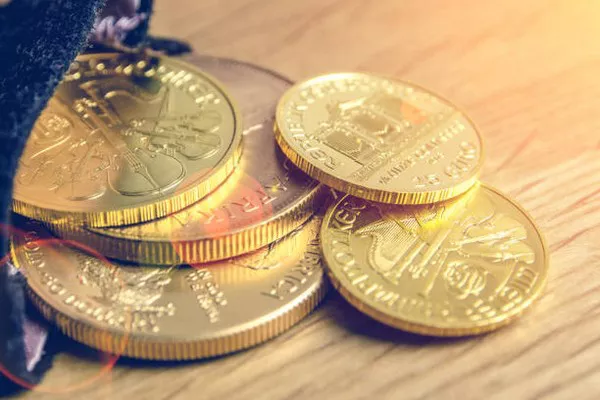In the realm of precious metals, gold holds a prominent position as a symbol of wealth, stability, and value. Investors and individuals alike often track the price of gold, particularly in terms of its value per ounce in US dollars. This article explores the dynamics behind what one ounce of gold is worth in US dollars, delving into current prices, historical trends, investment implications, and practical considerations for those interested in owning gold.
Current Price of Gold
As of the most recent update, the price of gold stands at approximately $2367.85 per troy ounce. It’s important to note that the gold market operates on a troy ounce basis, which differs slightly from the standard ounce used in other measurements. One troy ounce equals approximately 31.1034768 grams, a unit of measurement that is widely recognized in the precious metals industry.
Price Conversion
To provide clarity in understanding gold prices, it’s beneficial to explain the conversion between troy ounces and grams. Gold is often traded and measured in troy ounces, a system that dates back to the Middle Ages and is still employed today. Knowing this conversion helps individuals grasp the real-world value of gold in various markets and contexts.
Price Fluctuations
Gold prices are notoriously subject to fluctuations driven by a myriad of factors. These can include economic indicators, geopolitical events, inflation rates, currency movements, and investor sentiment. Understanding the volatility of gold prices is essential for those considering gold as part of their investment portfolio or for individuals evaluating its purchase for personal reasons.
Historical Prices
A historical perspective on gold prices offers valuable insights into its price movements and long-term trends. Gold has historically been a safe-haven asset, often sought during times of economic uncertainty or geopolitical instability. Examining past price data can reveal patterns and cycles that inform investment decisions and provide context for current market conditions.
A brief history of gold prices:
- 1970s: Gold experiences a significant surge amid global economic uncertainty.
- 1980s: Prices stabilize following a peak in 1980.
- 2000s: Gold begins a steady climb, peaking in 2011.
- 2010s: Prices fluctuate but generally remain strong, influenced by global economic conditions.
Spot Price vs. Retail Price
It’s crucial to differentiate between the spot price and the retail price of gold. The spot price refers to the current market price for immediate delivery of gold, typically traded through futures contracts or over-the-counter transactions. The retail price, on the other hand, includes additional costs such as fabrication, distribution, and dealer markups. Retail prices can vary widely depending on the form of gold being purchased (e.g., bars, coins, jewelry).
Investment Information
Gold prices have a direct impact on investment strategies and portfolios. Many investors allocate a portion of their assets to gold as a hedge against inflation or as a diversification strategy. Gold’s performance often correlates with market conditions, making it a valuable asset for risk management.
The relevance of tracking gold prices:
Portfolio Diversification: Gold can provide stability during economic downturns.
Inflation Hedge: Gold historically retains its value during periods of inflation.
Geopolitical Uncertainty: Gold is perceived as a safe-haven asset during geopolitical crises.
Keeping track of gold prices is essential for investors looking to optimize their portfolio performance and manage risk effectively. Changes in gold prices can signal broader market shifts and impact asset allocation decisions.
Buying Gold
For individuals interested in purchasing gold, there are several avenues to consider:
Bullion Dealers: Reputable bullion dealers offer a range of gold products, including bars and coins, at prices closely tied to the spot market.
Online Platforms: Many online platforms facilitate the purchase of gold, providing transparent pricing and secure transactions.
Physical Gold Stores: Local coin shops and jewelry stores often sell gold products for physical possession.
Gold ETFs: Exchange-traded funds (ETFs) backed by physical gold offer a convenient way to invest in gold without the need for direct ownership of the metal.
When buying gold, it’s important to research sellers, understand transaction fees, and consider storage options. Some investors prefer physical possession of gold for security and autonomy, while others opt for financial instruments that track gold prices without the burden of storage and insurance.
See Also What Symbol Is Gold On Stock Market
Conclusion
The value of one ounce of gold in US dollars reflects a complex interplay of economic, geopolitical, and market dynamics. Gold’s enduring allure as a store of value makes it a compelling asset for investors seeking diversification and risk management strategies. Understanding gold prices, their historical context, and the practicalities of buying gold empower individuals to make informed decisions aligned with their financial goals and risk tolerance.
As with any investment, it’s advisable to consult with financial professionals and conduct thorough research before committing to purchasing gold. By staying informed and vigilant, investors can navigate the dynamic landscape of gold markets and leverage this precious metal to enhance their investment portfolios.


